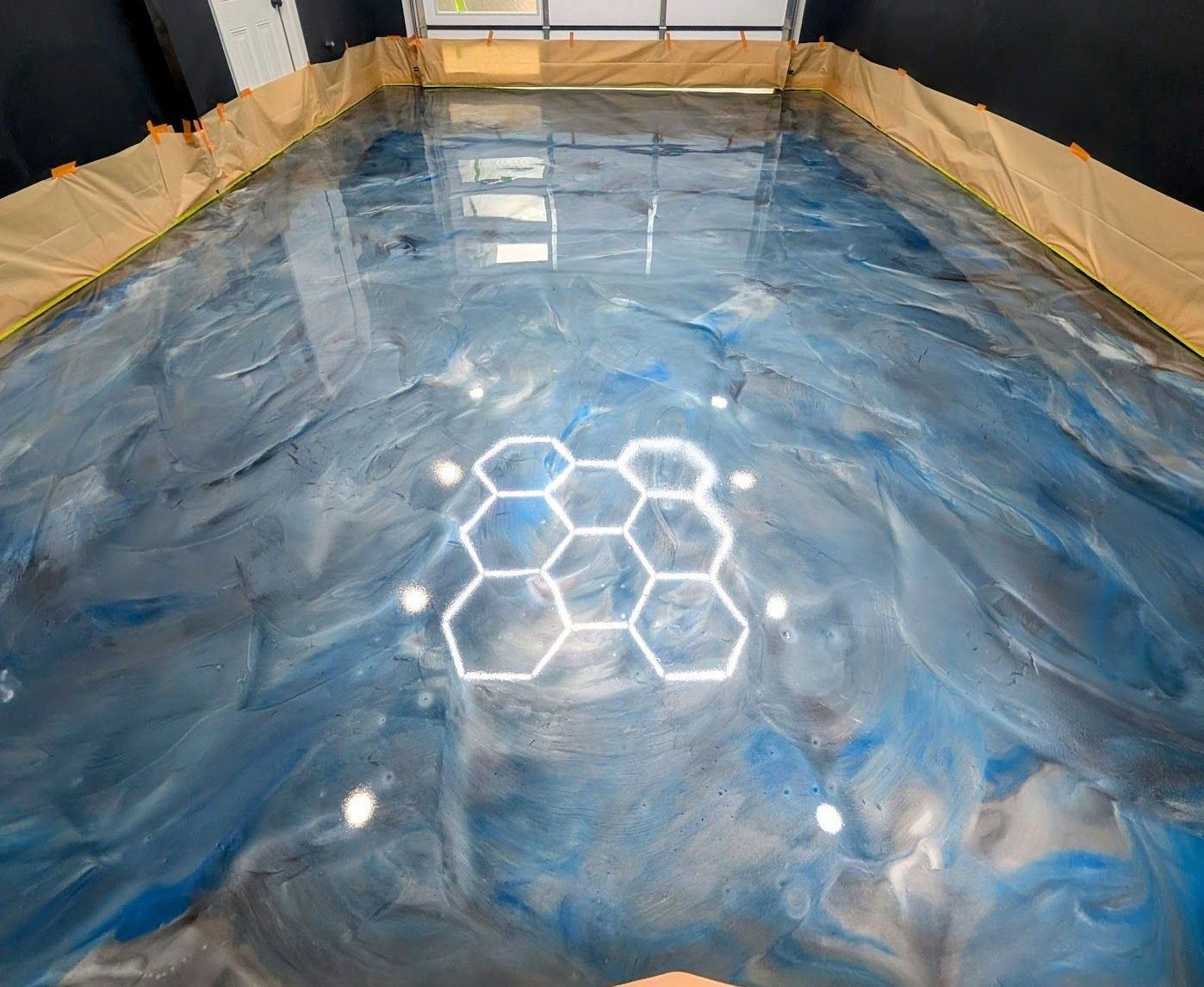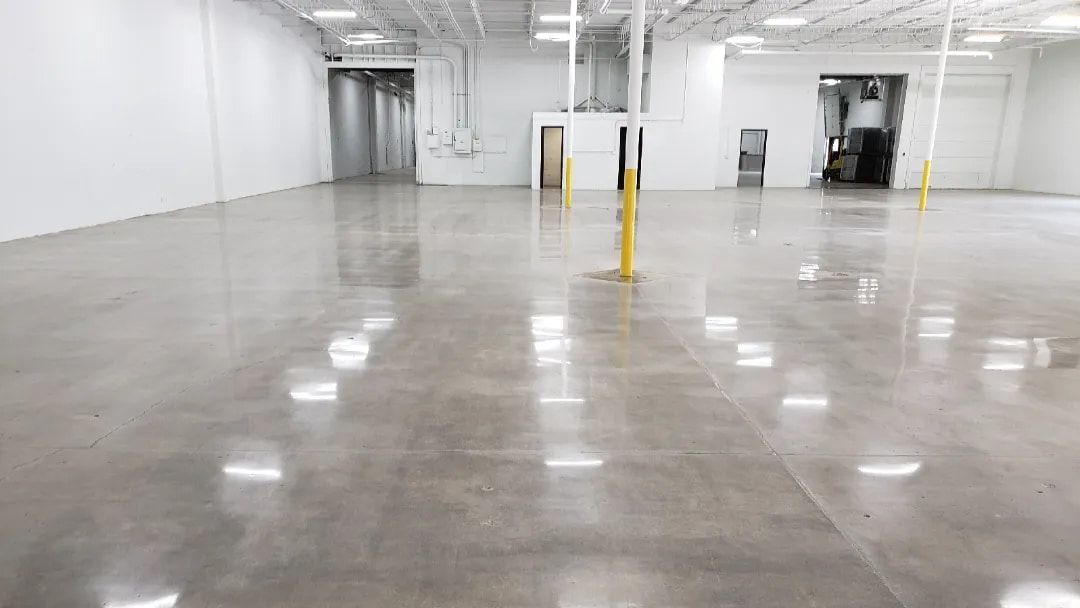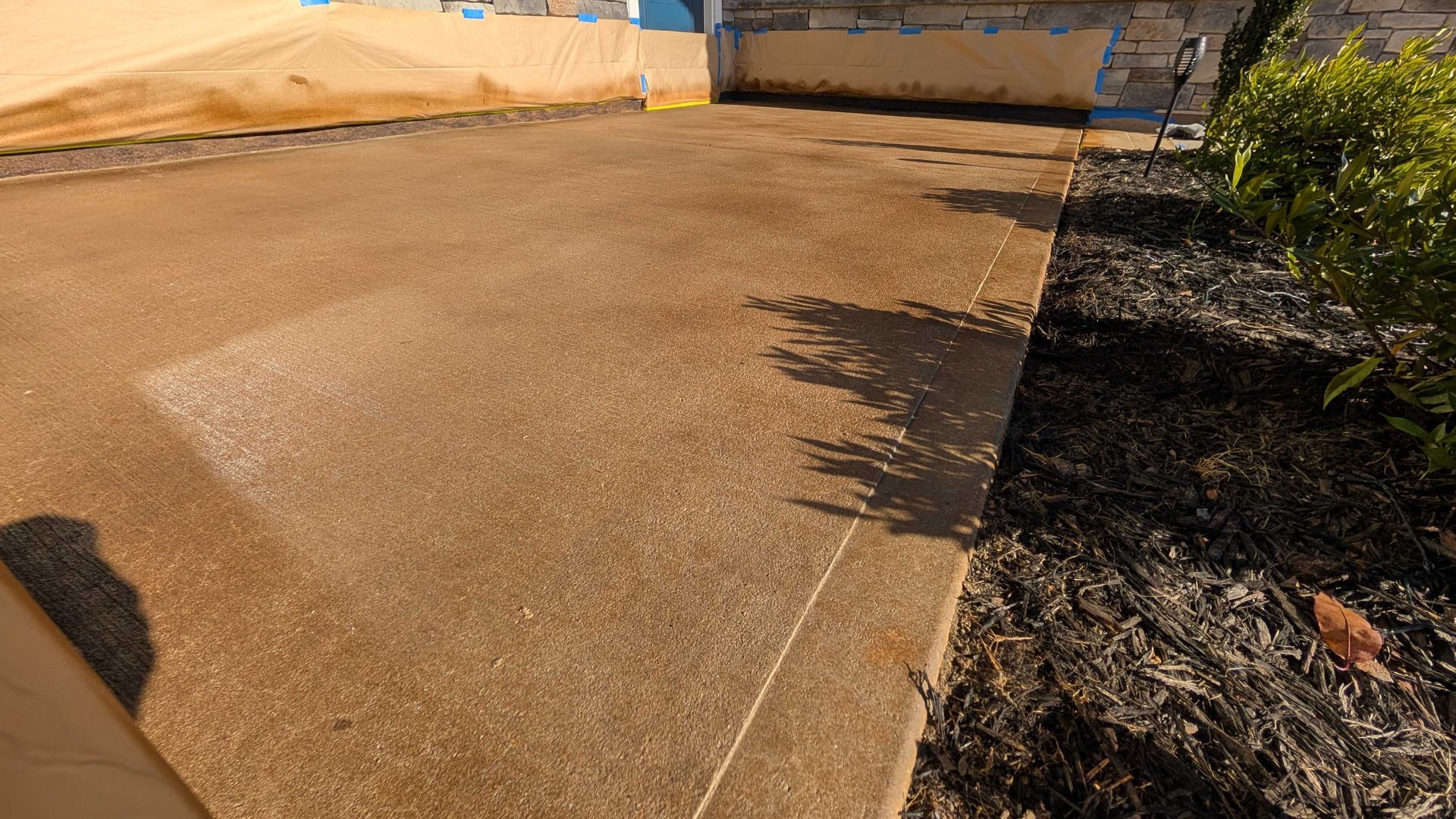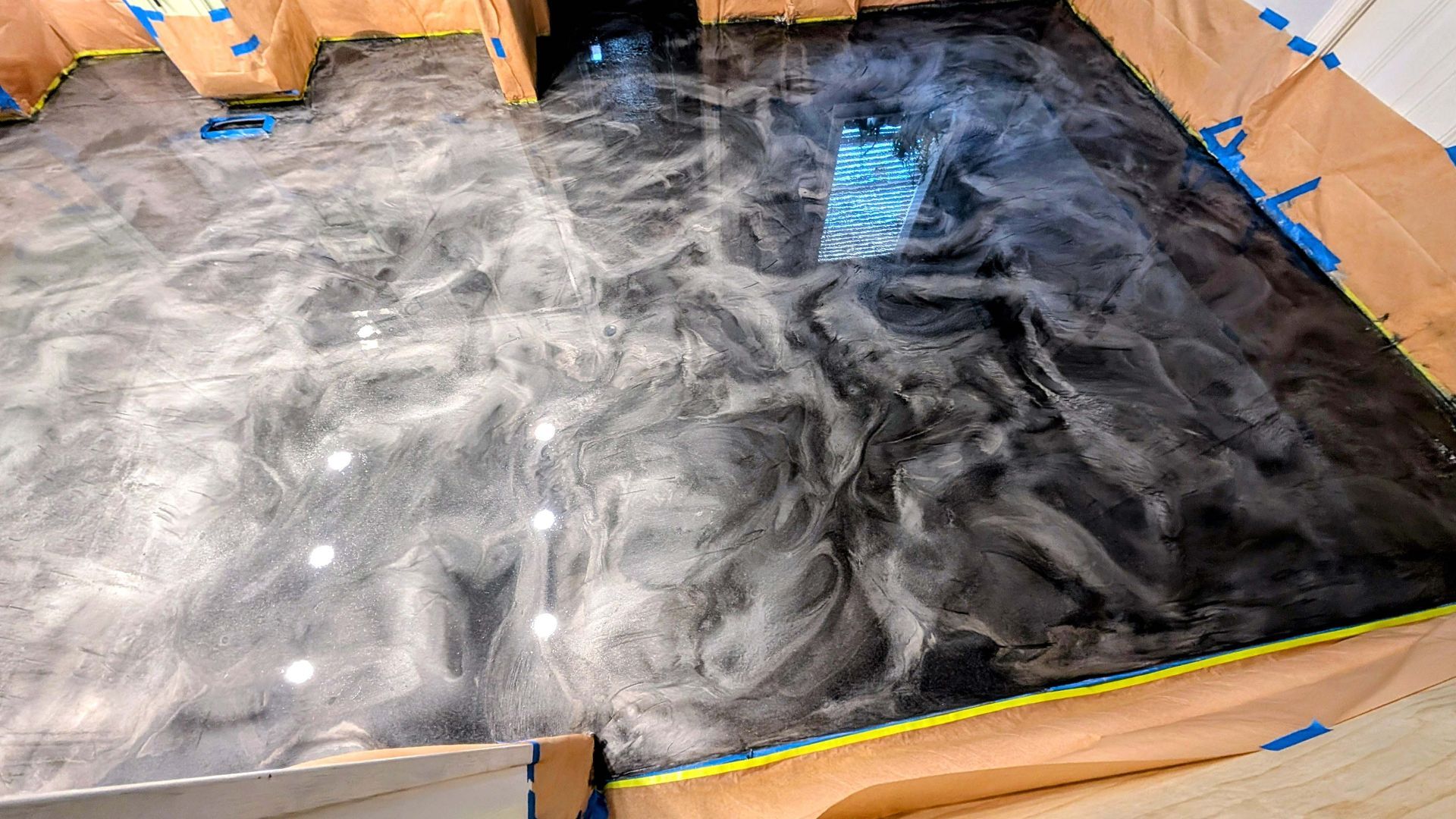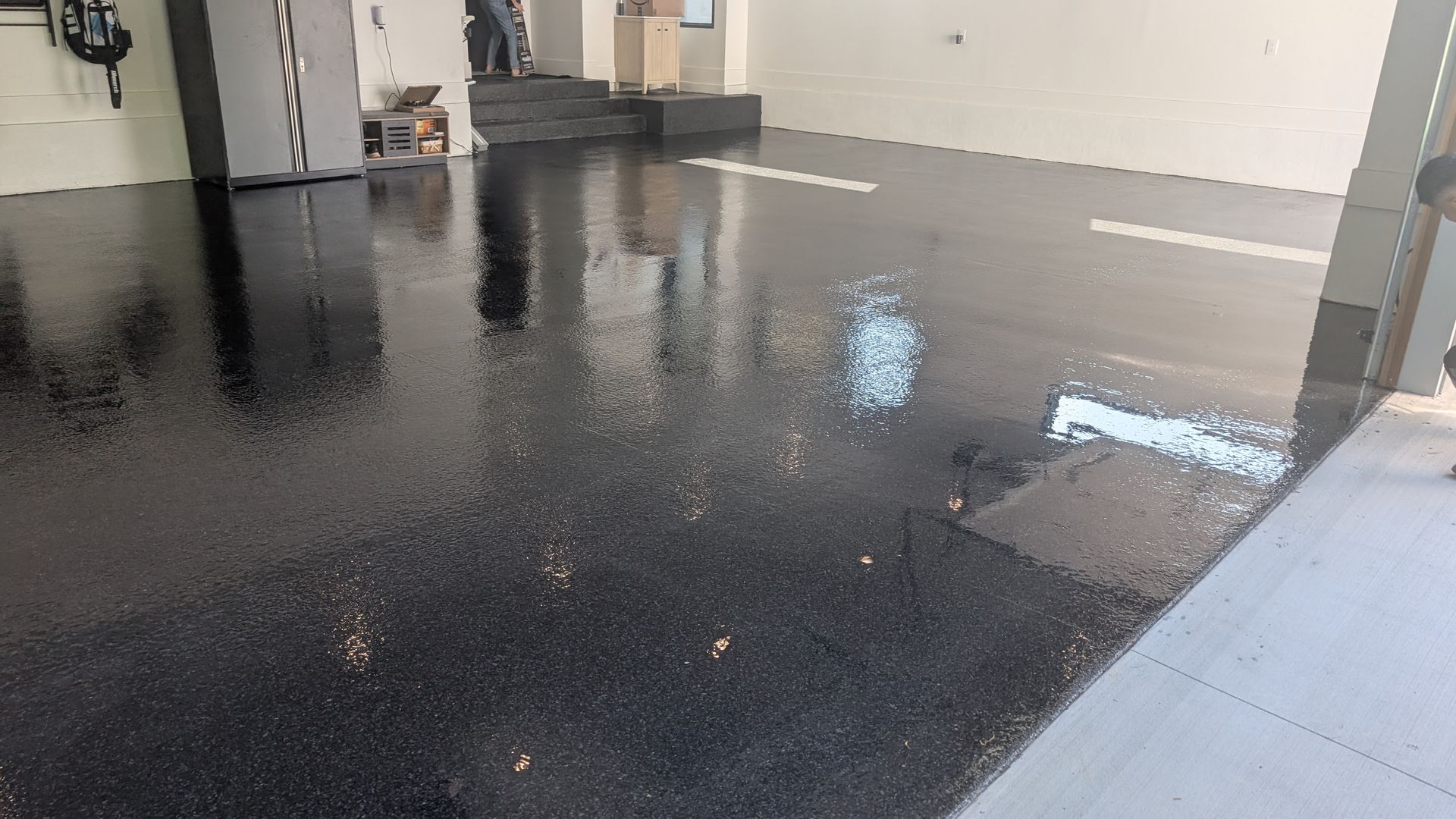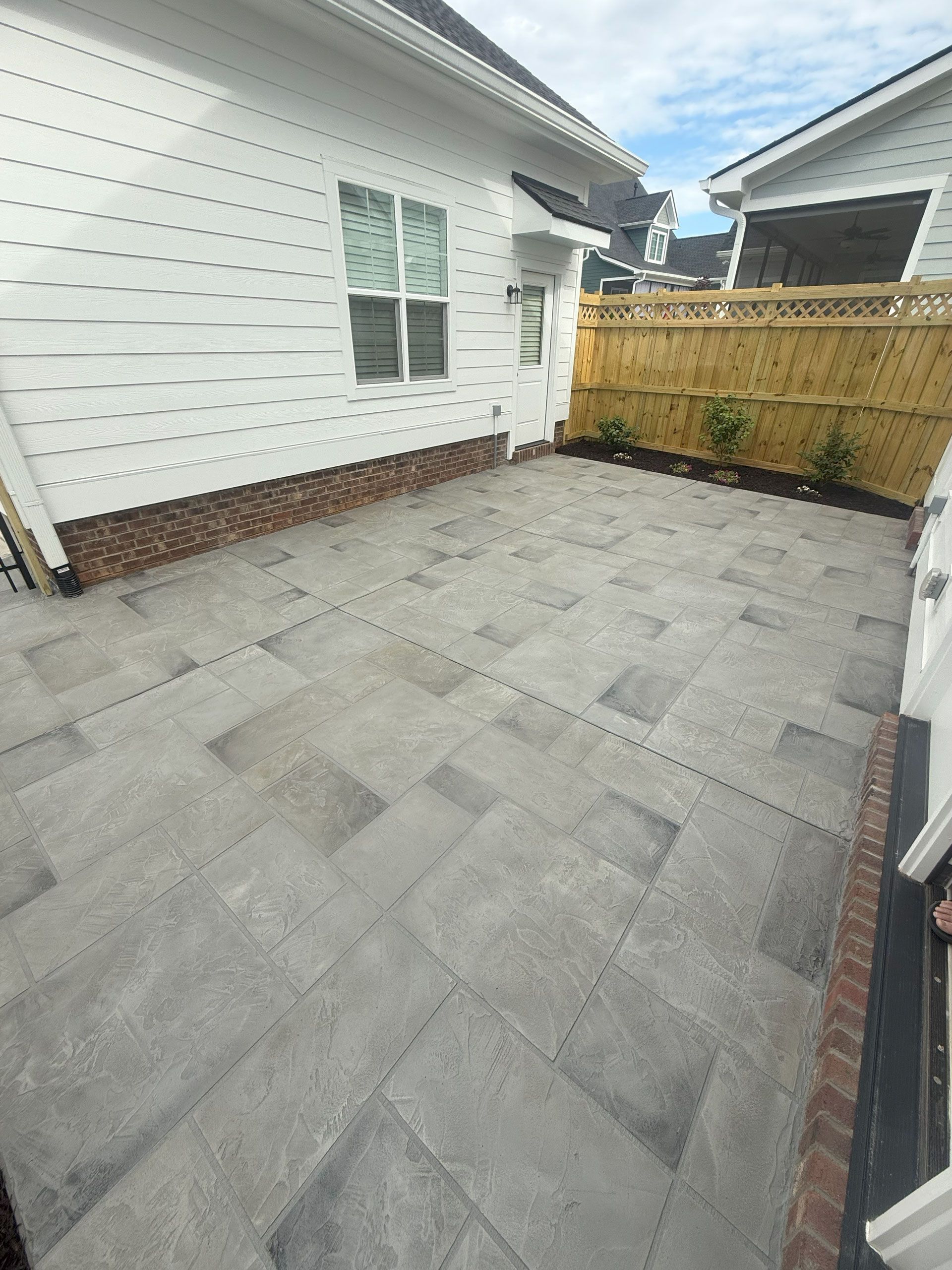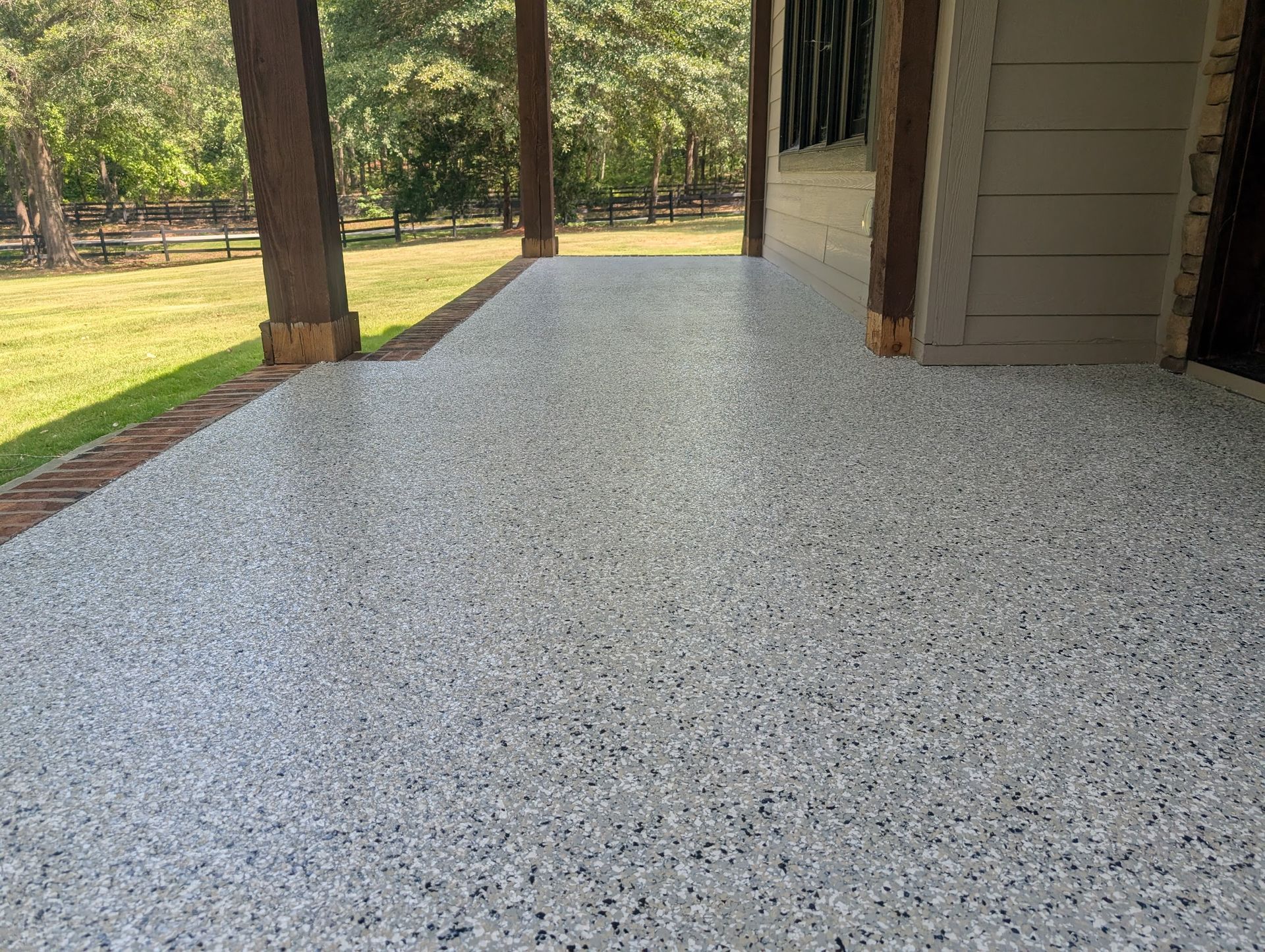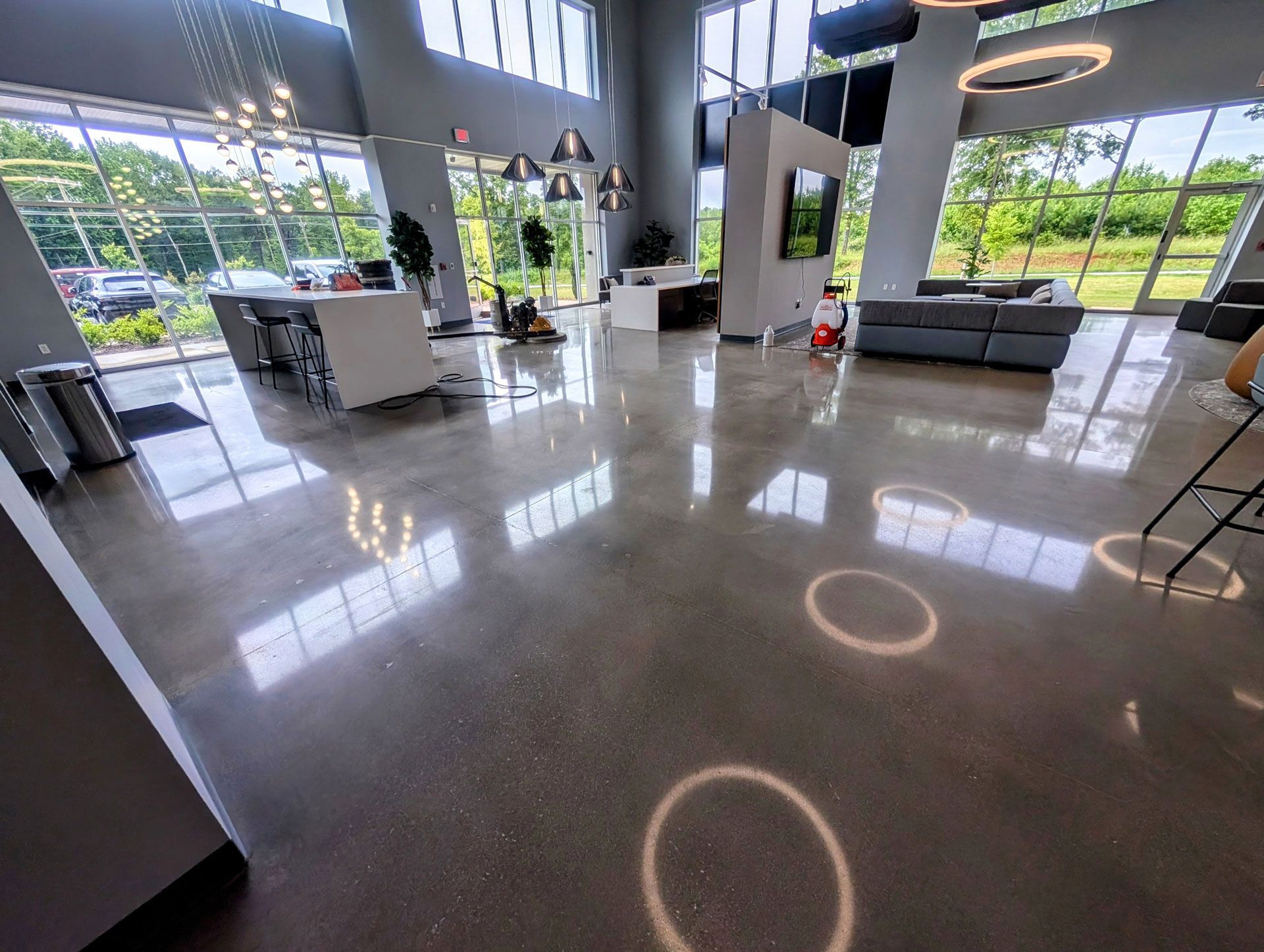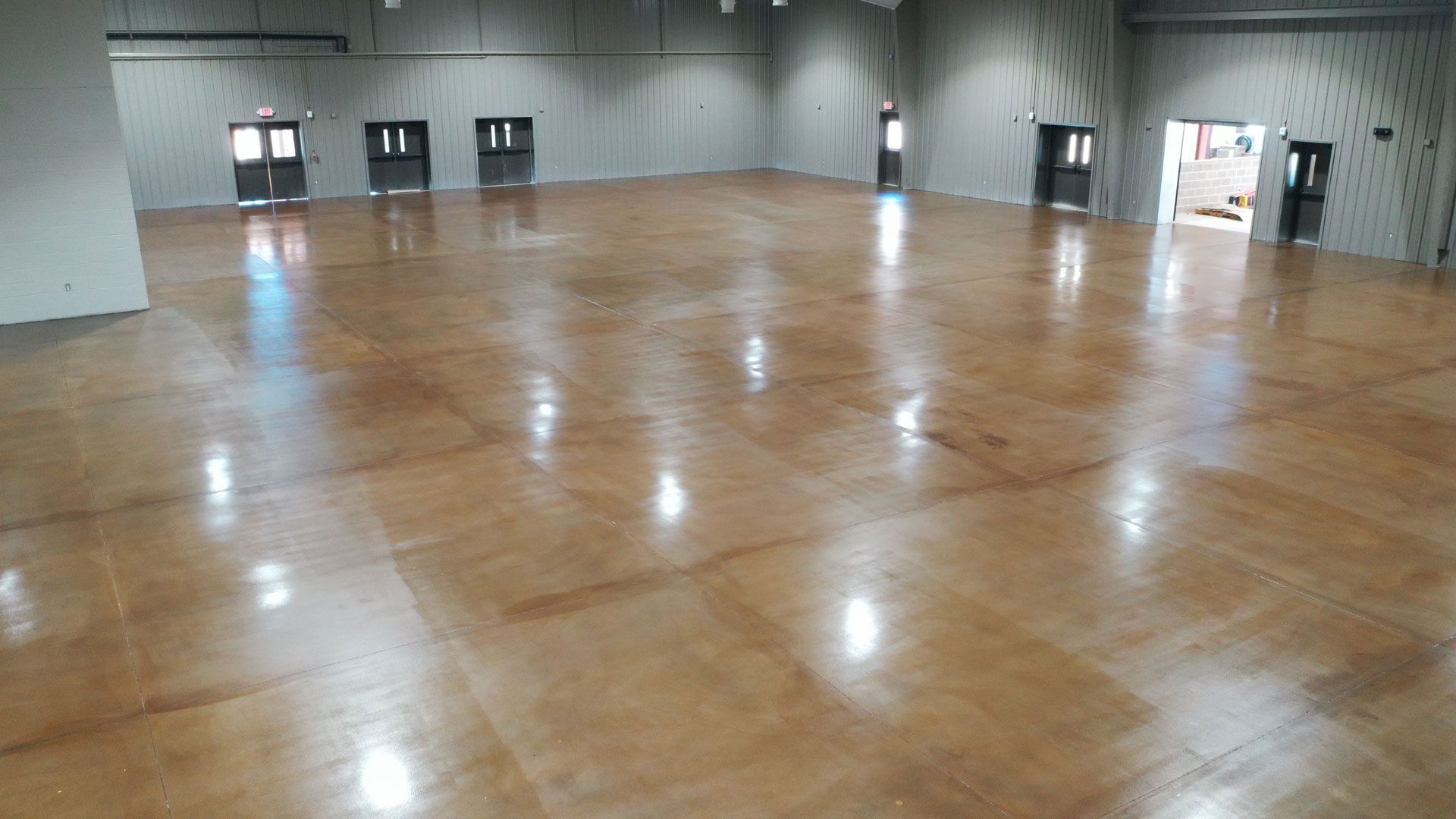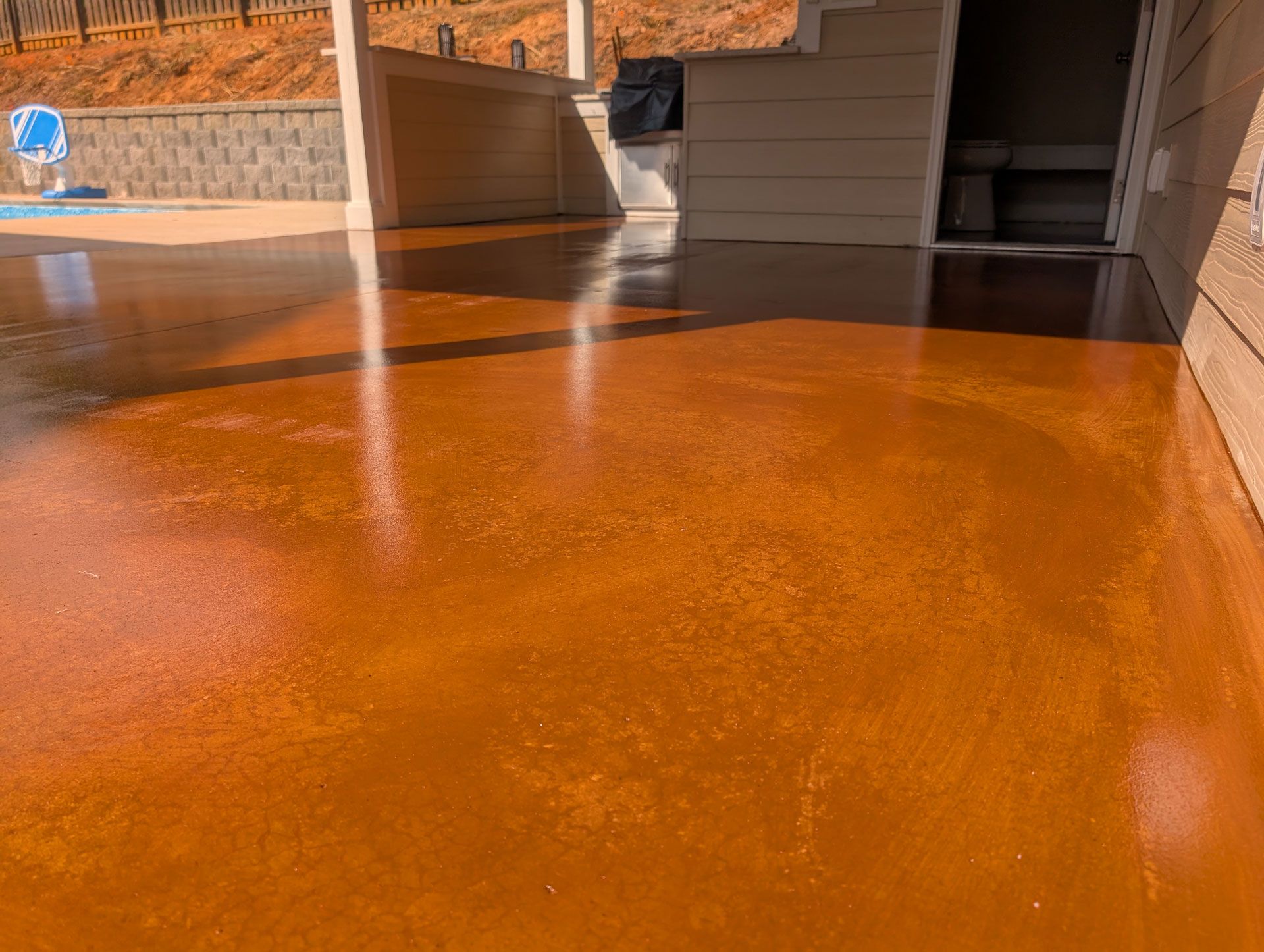Fake Stone? Concrete Overlay It and Call It Done
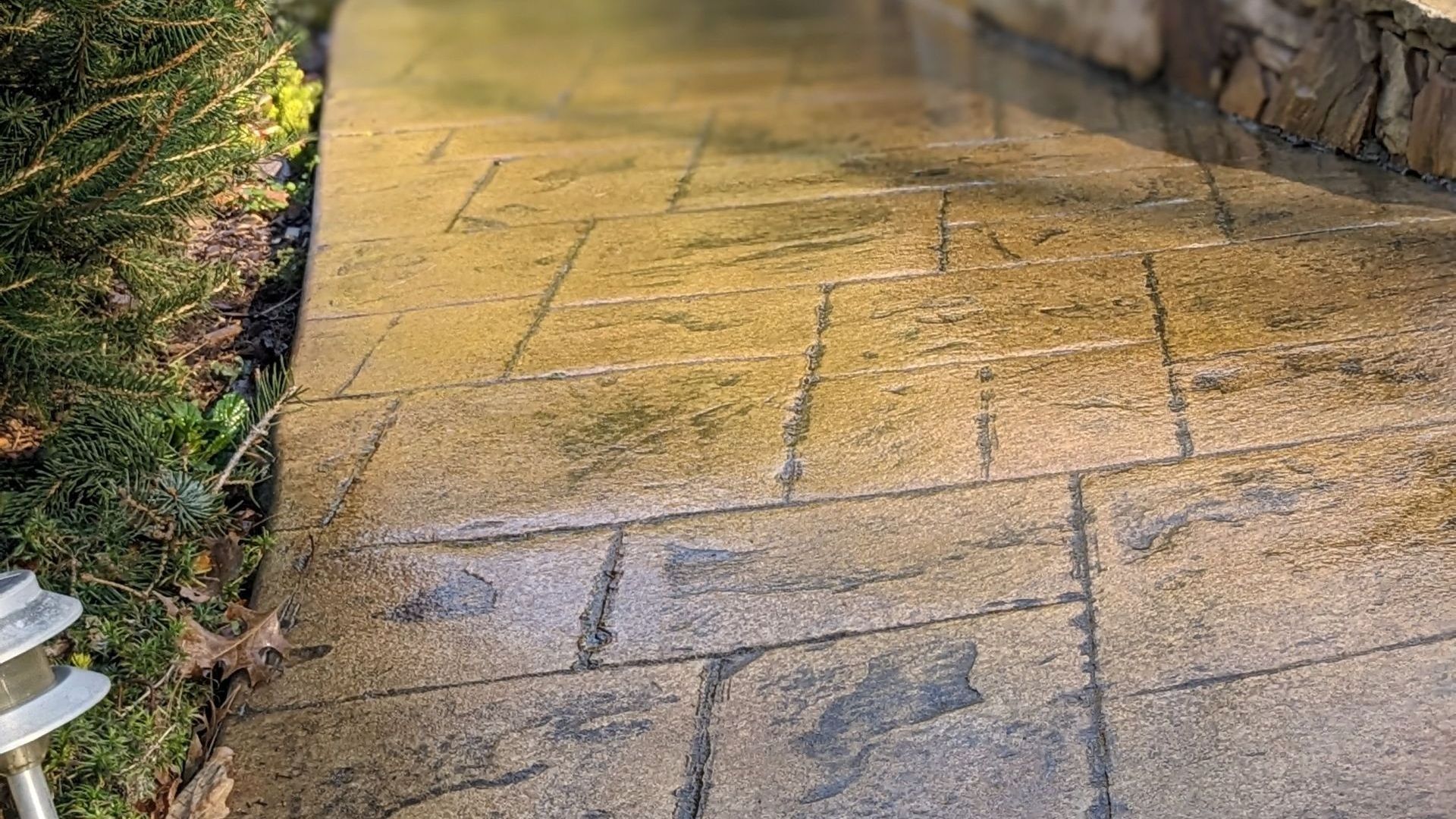
That faux-stone patio looked great... for the first summer. Now? It’s peeling, cracked, and clearly showing its age.
Whether it’s fake flagstone, stamped pavers that never really fooled anyone, or a DIY “stone finish” gone wrong, there’s a simple fix that doesn’t involve tearing everything out: concrete overlay.
If your outdoor space is suffering from a case of fake-it-and-regret-it, a concrete overlay can give it new life—with real durability, clean texture, and a finish that actually lasts. Here's why more homeowners and businesses are ditching faux surfaces and choosing concrete overlays instead.
What Is a Concrete Overlay?
A concrete overlay is a thin layer of cement-based material that’s applied directly over existing concrete (or other compatible surfaces). It’s designed to resurface worn, damaged, or outdated areas—indoors or out—without the need for demolition.
Overlays can be:
- Troweled smooth
- Stamped to mimic stone or tile
- Stained or colored for visual interest
- Textured for slip resistance
It’s like giving your patio, driveway, or shop floor a fresh start—without the price tag of replacement.
Why Concrete Overlay Beats Fake Stone Every Time
Let’s face it—faux stone and fake finishes often look great in the catalog but rarely hold up in the real world. Here’s how concrete overlay wins on every level:
✅ 1. Stronger Than Surface Paints or Stick-On Veneers
Most faux finishes rely on adhesives, surface coatings, or thin laminates that don’t bond well to concrete long-term. Overlays, on the other hand, chemically bond to the slab, creating a surface that can handle foot traffic, weather, and wear.
✅ 2. Looks Like the Real Thing
Modern overlays can be stamped and stained to mimic natural stone, slate, brick, or tile—without the repeat patterns or plastic shine. With custom scoring, hand-applied textures, and earthy color tones, the finish looks authentic—and feels solid underfoot.
✅ 3. Built to Handle Weather
Overlays are resistant to UV rays, rain, snow, and temperature swings. So whether you’re resurfacing a pool deck in the summer or a front entry in the winter, the surface won’t flake, fade, or peel.
✅ 4. Slip-Resistant and Safe
Worried about slick stamped concrete? Overlays can be finished with broom textures or anti-slip additives—perfect for walkways, porches, and high-traffic outdoor areas.
✅ 5. Eco-Friendly and Budget-Friendly
Instead of ripping out and hauling away your old slab, overlays let you reuse what’s already there. That means less waste in the landfill—and a lower cost to you.
Common Uses for Concrete Overlay
Concrete overlays are as versatile as they are tough. Here are some of the most popular applications:
- Patios – Replace worn-out pavers or faded stone stamps
- Pool Decks – Cool-to-touch finishes that don’t burn feet in summer
- Driveways – Smooth or decorative textures that hold up under vehicles
- Walkways – Slip-resistant finishes with custom scoring
- Garage Floors – Resurfaced with polished or sealed overlays
- Retail Spaces or Showrooms – Durable and decorative flooring that reflects your brand
What’s the Process Like?
Overlays are faster than full replacement—and cleaner too. Here's what the typical installation process looks like:
1. Surface Prep
The existing surface is cleaned, degreased, and any damaged areas are repaired. Surface profile is adjusted for proper adhesion (usually via grinding or etching).
2. Overlay Application
The overlay is applied using a trowel, broom, or sprayer—depending on the desired finish. Thickness can range from 1/8" to 1/2" or more.
3. Stamping or Texturing (Optional)
If a stamped or textured finish is desired, the surface is treated while still wet using specialty mats, hand tools, or rollers.
4. Staining or Coloring
Pigments or stains are added for depth, variation, and realism. This is where overlays truly shine—mimicking natural stone patterns in high detail.
5. Sealing
A durable, weather-resistant sealer is applied to protect against water, stains, and UV damage.
In most cases, the entire process takes 2–3 days—and the surface is walkable within 24–48 hours.
How Much Does a Concrete Overlay Cost?
Here’s a general breakdown of overlay pricing:
| Type of Overlay | Avg. Cost per Sq. Ft. |
|---|---|
| Basic troweled overlay | $4 – $6 |
| Stamped concrete overlay | $7 – $12 |
| Stained or colored overlay | $6 – $10 |
| High-performance coatings | $8 – $14 |
So if you’re looking to resurface a 400 sq. ft. patio with a stamped and stained overlay, you’re looking at $3,200–$4,800—a significant savings compared to demo and replacement.
Can You Overlay Fake Stone or Bad Stamping?
or movement), an overlay can go right over it.
A contractor will evaluate:
- Is the surface solid and bondable?
- Are there lifting or hollow spots under old finishes?
- Will minor repairs fix it before applying the overlay?
In many cases, peeling stamped overlays, faded faux stones, and worn pavers can all be cleaned, repaired, and resurfaced using an overlay system.
Final Thoughts: Ditch the Faux, Go With Real Durability
Faux finishes might look good for a season—but when it comes to long-term performance, concrete overlays are the real deal. Whether you're tired of flaking stone, outdated stamping, or just want a low-maintenance outdoor surface that actually lasts, an overlay is the fast-track to a better-looking space.
And when it’s done right, you won’t just hide the old surface—you’ll upgrade it.
Zachary Daniel Concrete specializes in high-performance overlays that look like stone but hold up like concrete. From patios to driveways, garages to commercial entryways, we bring worn surfaces back to life with craftsmanship that’s built to last.
Ready to overlay and call it done? Reach out to Zachary Daniel Concrete for a free consultation and let’s transform that tired surface into something timeless.
